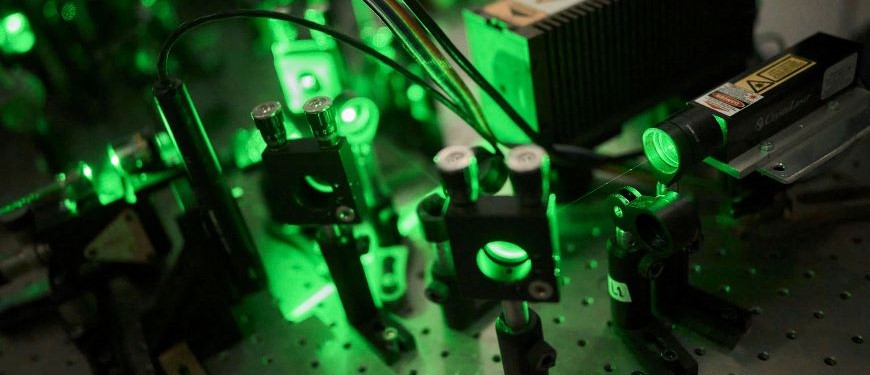Control of light by light based on nonlinear optics enables the temporal and spectral diversification of light required in modern photonic technologies but is limited by the inherently weak interaction of light with matter. Nonlinear optical phenomena are thus conventionally realized by exploiting high optical powers and extended volumes of nonlinear crystals to accumulate an appreciable nonlinear response; the frontier of nano-optics, where fragile nanostructured materials offer inherently small light-matter interaction volumes, thus presents a considerably challenging arena in which to control light by light.
Polaritons, the collective oscillations of polarization charges at interfaces separating media with positive and negative permittivity, focus light on the nanoscale to boost light-matter interactions and reduce the light-intensity threshold required to trigger nonlinear optical effects. Paradigms of polariton-enhanced optical nonlinearity in van der Waals crystals hold potential in consideration to both effective use of the external pump light, by exploiting polaritonic resonances, as well as enhancing the underlying nonlinearity itself through atomic-scale electronic band engineering.
The light-focusing properties of highly-confined 2D polaritons can drive the intrinsic nonlinear response of their engineered atomically-thin hosts as well as the nonlinearity emerging from strong coupling of optical near-fields with atom-like quantum light sources. Explorations of efficient nonlinear optical interactions will span all regimes of light-matter coupling strength, ranging from extreme nonlinear optical phenomena driven by intense ultrashort pulses to quantum optical nonlinearity, where individual light quanta can interact deterministically.

Publications:
- Mikkel Have Eriksen, Jakob E. Olsen, Christian Wolff, and Joel D. Cox, “Optoelectronic control of atomic bistability with graphene,” Phys. Rev. Lett. 129, 253602 (2022) https://doi.org/10.1103/PhysRevLett.129.253602
- Álvaro Rodríguez Echarri, Joel D. Cox, Fadil Iyikanat, and F. Javier García de Abajo, “Nonlinear plasmonic response in atomically thin metal films,” Nanophotonics 10, 4149 (2021) https://doi.org/10.1515/nanoph-2021-0422
- Sandra de Vega, Joel D. Cox, Fernando Sols, and F. Javier García de Abajo, “Strong-field-driven dynamics and high-harmonic generation in interacting one dimensional systems” Phys. Rev. Res. 2, 013313 (2020) https://doi.org/10.1103/PhysRevResearch.2.013313
- Joel D. Cox and F. Javier García de Abajo, “Nonlinear graphene nanoplasmonics,” Acc. Chem. Res. 52, 2536 (2019) https://doi.org/10.1021/acs.accounts.9b00308
- Joel D. Cox and F. Javier García de Abajo, “Nonlinear atom-plasmon interactions enabled by nanostructured graphene,” Phys. Rev. Lett. 121, 257403 (2018) https://doi.org/10.1103/PhysRevLett.121.257403
- Joel D. Cox, Andrea Marini, and F. Javier García de Abajo, “Plasmon-assisted high-harmonic generation in graphene,” Nat. Commun. 8, 14380 (2017) https://doi.org/10.1038/ncomms14380
- Joel D. Cox, Iván Silveiro, and F. Javier García de Abajo, “Quantum effects in the nonlinear response of graphene plasmons,” ACS Nano 10, 1995 (2016) https://doi.org/10.1021/acsnano.5b06110
